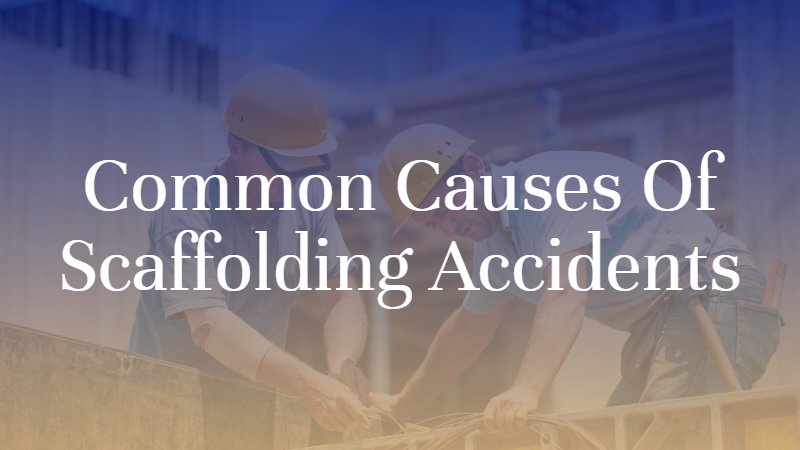
What Are Common Causes of Scaffolding Accidents?
Colburn Law
Posted in Car Accidents on February 14, 2021

A scaffold is a temporary structure that workers on a construction site use to elevate materials, equipment, and themselves. While these platforms are vital to building large structures, scaffolds can be very dangerous if they are not used properly. Scaffolding accidents can cause severe injuries, including broken bones, spinal cord damage, and brain trauma. There are multiple reasons why a scaffolding accident may occur. If you or a loved one has been injured, you may be eligible for compensation. Contact our Seattle construction accident lawyers today for a free case evaluation.
Poor Construction
The Occupational Safety and Health Administration (OSHA) sets strict standards for the construction and staging of scaffolding. When workers on a construction site assemble a scaffold, they must follow these standards closely to ensure the safety of others who will use the structure. Scaffolds that are unsafe or insecure can collapse underneath a worker, leading to severe injuries and fatalities.
Worker and Employer Negligence
In addition to constructing a scaffold according to OSHA standards, workers on a construction site must act carefully while using these structures. Any act of negligence involving a scaffold—which involves an act or omission that violates the worker’s duty of care—can result in a serious accident. If a worker overloads a scaffold, fails to ensure attachments are safe, or otherwise acts carelessly while another person is on or around the scaffold, these actions can threaten the structure’s integrity, leading to a collapse.
Employers may also cause scaffolding accidents through acts of negligence. Like their workers, construction employers have a duty to uphold safety standards set by OSHA and relevant state regulations. An employer may commit an act that puts his or her employees’ safety at risk by using improper scaffolding materials, failing to provide proper training, or providing inadequate fall protection, for example. If any injuries or fatalities occur due to the employer’s actions, he or she can be liable for the damages of his or her employees.
Falling Debris and Objects
Construction workers and employers must take steps to protect others on the worksite from falling objects and debris. If an employee fails to properly secure an object on a scaffold, it can fall off the platform and strike a person below. According to OSHA, 518 people died in 2019 after being struck by an object or equipment at work.
Legal Options for Scaffolding Accident Victims
If you suffer an injury while working on or around a scaffold, you may be eligible for financial compensation. However, the pathway you take to obtain this compensation will depend on the circumstances surrounding your injury. You may file a workers’ compensation claim with the Washington Department of Labor and Industries (L&I), a personal injury lawsuit against your employer, or a lawsuit against a third party.
You may file a L&I claim after a scaffolding accident regardless of whether fault or negligence played a role. You will need to prove that you suffered an injury while performing your work duties. However, filing an L&I claim waives your right to file a lawsuit against your employer—if you believe his or her negligence is responsible for the scaffolding accident, you may want to pursue a lawsuit instead.
If your accident occurred due to the actions of a third party, such as the manufacturer of scaffolding materials or a negligent subcontractor, you may pursue a third-party lawsuit against the responsible party. You can pursue a third-party claim regardless of whether you filed an L&I claim.
Whether you wish to file an L&I claim or a lawsuit, you need an attorney on your side. As soon as possible after your scaffolding accident, contact a Seattle personal injury attorney to discuss your path to recovery.



